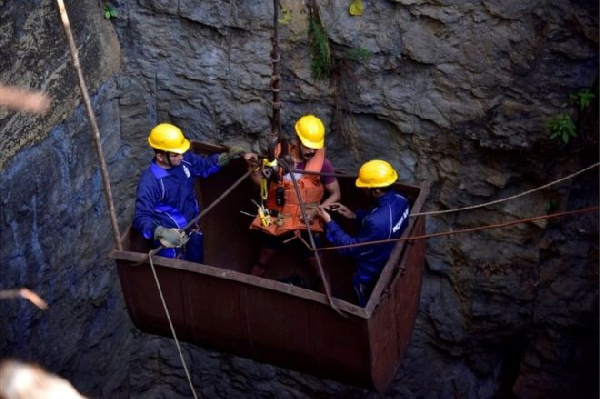Published
4 years agoon

After several years of lull, with regards to new mine development, Ghana is on the brink of getting two new gold mines within the next couple of years. Importantly, both impending mines will be located in the two northernmost regions, Upper East and Upper West, the first time ever that these two regions which are the most economically deprived in the country, will host large scale gold production.
Both mines are being planned and constructed by Australian exploration and production firms, and both are listed on the Australian Stock Exchange.
It is likely that the first of the two to actually commence production will be the Wa Gold Project, a surface mine, being executed by Azumah Resources. Located across the Wa East and Nadowli Districts of the Upper West Region, it is the result of nearly a decade of activity, which declined for much of last decade due to financing constraints, before being revamped when the company secured US$11.25 million in financing, coupled with crucial technical expertise from Ibaera Capital, a private equity firm that specializes in mining projects, being owned by a group of former miners who are bringing innovative approaches to mining project financing and execution.
The original agreement allowed Ibaera a 42.5 percent equity stake in the project with the possibility of further fully paid equity stakes after a two year period during which the US$11.25 million was to be used. This resulted in a 65 percent increase in ore reserves, to 1.03 million ounces, derived from a similar increase in underlying mineral resources to 2.5 million ounces. Consequently Ibaera has put in lots more equity finance, which has given it a clear majority stake in the project. Government, as usual has a 10 percent freely carried equity stake.
The impending new mine is expected to produce an annual average of 107,000 ounces over the first seven years of its projected 11 year mine life, this rising from 70,000 during the first year of production. Production is projected to decline during the latter part of the mine life, but the average annual production for the full life span of the project is still a sturdy 85,072 ounces. This is projected to generate net revenues of US$1.151 billion in all, at an estimated price per ounce of US$1,300, with government getting royalties of US$61 million (at a royalty rate of five percent, this amounting to US$65 per ounce), in addition to income tax and dividends.
Actually this could be more – the gold price has been rising over the past few years and is now at over US$1,500 per ounce. Already, the requisite mining leases have been secured and the process for obtaining an environmental permit is well advanced. Importantly, government is actively supporting the project and power has been extended to the mine site.
Processing is to be done using a carbon-in-leach plant. Capital expenditure is projected at US$117 million with a project pay pack period of just 1.6 years.
Crucially, further exploration has indicated a strong potential for an underground mine as well. Drilling done since 2018 has revealed high grade gold resources below the already identified – and about to be exploited – resource.
The other impending mine is the Namdini project being executed by Cardinal Resources in the vicinity of Bolgatanga, Upper East Region. The feasibility study submitted in November last year, is based on proven and probable reserves of 5.1 million ounces of gold, which will support a mine with a 15 year life span, that will produce 4.2 million ounces.
It is projected that 421,000 ounces will be produced in the first year, and 1.1 million ounces will be produced during the first three years of full production. Average annual production for the entire mine life is projected at 287,000 ounces.
This is based on a targeted 85 percent gold recovery rate during those first three years, using Aachen processing technology, adopted to reduce operating costs and utilize a carbon-in-leach plant. Indeed, projected all-in sustaining costs are a relatively low US$585 per ounce during the capex pay back period of 21 months.
The mine is projected to generate US$1.46 billion in pre-tax free cashflow over the 15 years, which means royalties of some US$73 million for government, in addition to income tax and dividends on its 10 percent freely carried equity stake.
Capital expenditure will amount to US$348 million plus another US$42 million for contingencies and the projected gold price of US$1,350 per ounce is well below the current market price.
The mine will be a single open pit for surface mining.
Cardinal Resources hopes to have its mine up and running before the end of 2022 but this depends on its securing all the requisite finance before the middle of this year, a proposition entirely within the realms of possibility considering the attractive project economics.
While the mine does not yet have expansion potentials as clear as those provided by the prospects for underground mining at Azumah’s Wa Project, Cardinal is optimistic that with 900 square kilometres of exploration territory within haulage distance of its impending Namdini processing plant, more resources can be discovered and therefore is going ahead with further exploration. Instructively, positive results have been derived recently at Ndongo East, just 24 kilometres north of Namdini.
Source: goldstreetubusiness.com
